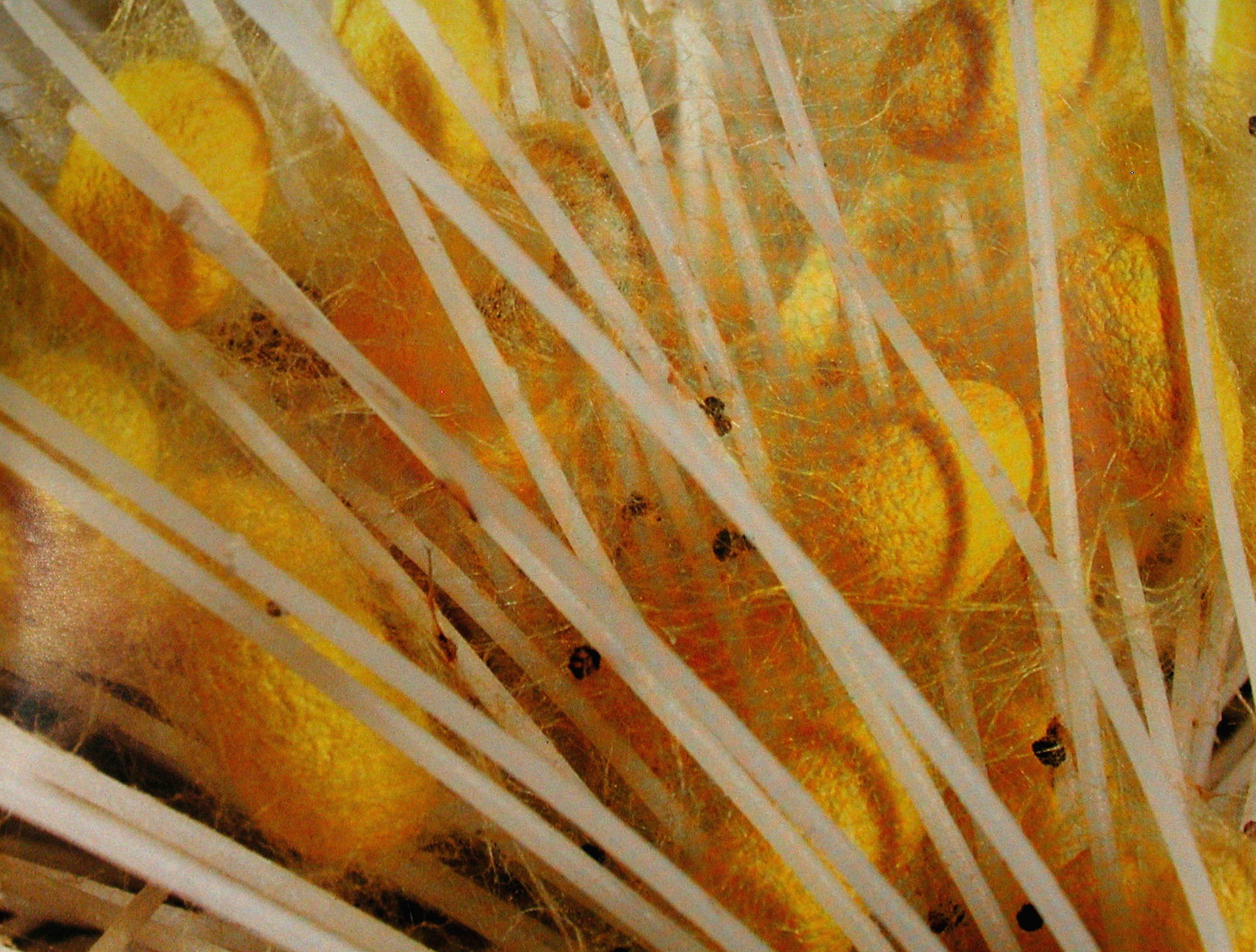An interdisciplinary team of researchers led by Professor Fritz Vollrath from Oxford University’s Department of Zoology examined the behavior and function of several animal silks cooled to liquid nitrogen temperature of -196°C. While most polymer fibers become brittle when cold, they’ve determined that silk’s cryogenic toughness is based on its nano-scale fibrils. Sub-microscopic order and hierarchy allow silk to withstand temperatures of down to -200°C and possibly even lower, which would make these classic natural luxury fibers ideal for applications in the depths of chilly outer-space.
The fibers studied included spider silks but focused on the thicker and much more commercial fibres of the wild silkworm Antheraea pernyi.
“We envision that this study will lead to the design and fabrication of new families of tough structural filaments and composites using both natural and silk-inspired filaments for applications in extreme cold conditions such as space,” said Vollrath.
The team was able to show not only that increases its toughness under conditions where most materials would become very brittle, but how it does so. Indeed, silk seems to contradict the fundamental understanding of polymer science by not losing but gaining quality under really cold conditions by becoming both stronger and more stretchable. It turns out the underlying processes rely on the many nano-sized fibrils that make up the core of silk fiber.
In line with traditional polymer theory, the study asserts that the individual fibrils do indeed become stiffer as they get colder. The novelty and importance of the study lie in the conclusion that this stiffening leads to increased friction between the fibrils. This friction, in turn, increases crack-energy diversion while also resisting fibril slippage. Changing temperature would also modulate attraction between individual silk protein molecules in turn affecting the core properties of each fibril, which is made up of many thousand molecules.
The research is able to describe the toughening process on both the micron and nano-scale levels. The team concludes that any crack that tears through the material is diverted each time it hits a nano-fibril forcing it to lose even more energy in the many detours it has to negotiate. And thus a silk fiber only breaks when the hundreds or thousands of nano-fibrils have first stretched and then slipped and then all of them have individually snapped.
The discovery is pushing boundaries because it studied material in the conceptually difficult and technologically challenging area that not only spans the micron and nano-scales but also has to be studied at temperatures well below any deep-freezer. The size of scales studied ranges from the micron size of the fiber to the sub-micron size of a filament bundle to the nano-scale of the fibrils and last but not least to the level supra-molecular structures and single molecules. Against the backdrop of cutting edge science and futuristic applications, it is worth remembering that silk is not only a 100% biological fiber but also an agricultural product with millennia of R&D.
It would appear that this study has far-reaching implications by suggesting a broad spectrum of novel applications for silks ranging from new materials for use in Earth’s polar regions to novel composites for light-weight airplanes and kites flying in the strato- and mesosphere to, perhaps, even giant webs spun by robot spiders to catch astro-junk in space.
Dr. Juan Guan from Beijing’s Beihang University said: “This study provides novel insights into our understanding of the structure-property relationships of natural high-performance materials which we hope will lead to fabricating man-made polymers and composites for low temperature and high impact applications.”
And Dr. Chris Holland from Sheffield University, leader of a European-wide Research Consortium on novel, sustainable bio-fibers based on insights into natural silk spinning said, “Natural silks continue to prove themselves as gold standard materials for fiber production. The work here identifies that it is not just the chemistry, but how silks are spun and in consequence are structured that is the secret to their success.”
The next steps of the research will further test the amazing properties. A spin-out company, Spintex Ltd, from Oxford University, partly funded by an EU H2020 grant, is exploring spinning silk proteins the spider’s way and focuses on copying the sub-micron structures of bundled fibrils. Oxford has created more than 170 new spinout companies since 1988, with more than a third of those having been created in the last three years.
Silk
Natural silks are environmentally sustainable with the animal spin-extruding it from aqueous protein melts at ambient temperatures and low pressures. Many silks are bio-compatible, making them excellent materials for use in medical devices. Silks are light and tend to be very tough, suggesting use in light-weight applications where much energy has to be taken up by the material. All silks are bio-disposable, consisting entirely of natural amino acid building blocks that easily integrate into the natural cycle of decay and rebuilding. Last but not least, there is a wealth of information hidden in silk on protein folding and on Nature’s way of making exceptional polymer structures.
Source: University of Oxford

